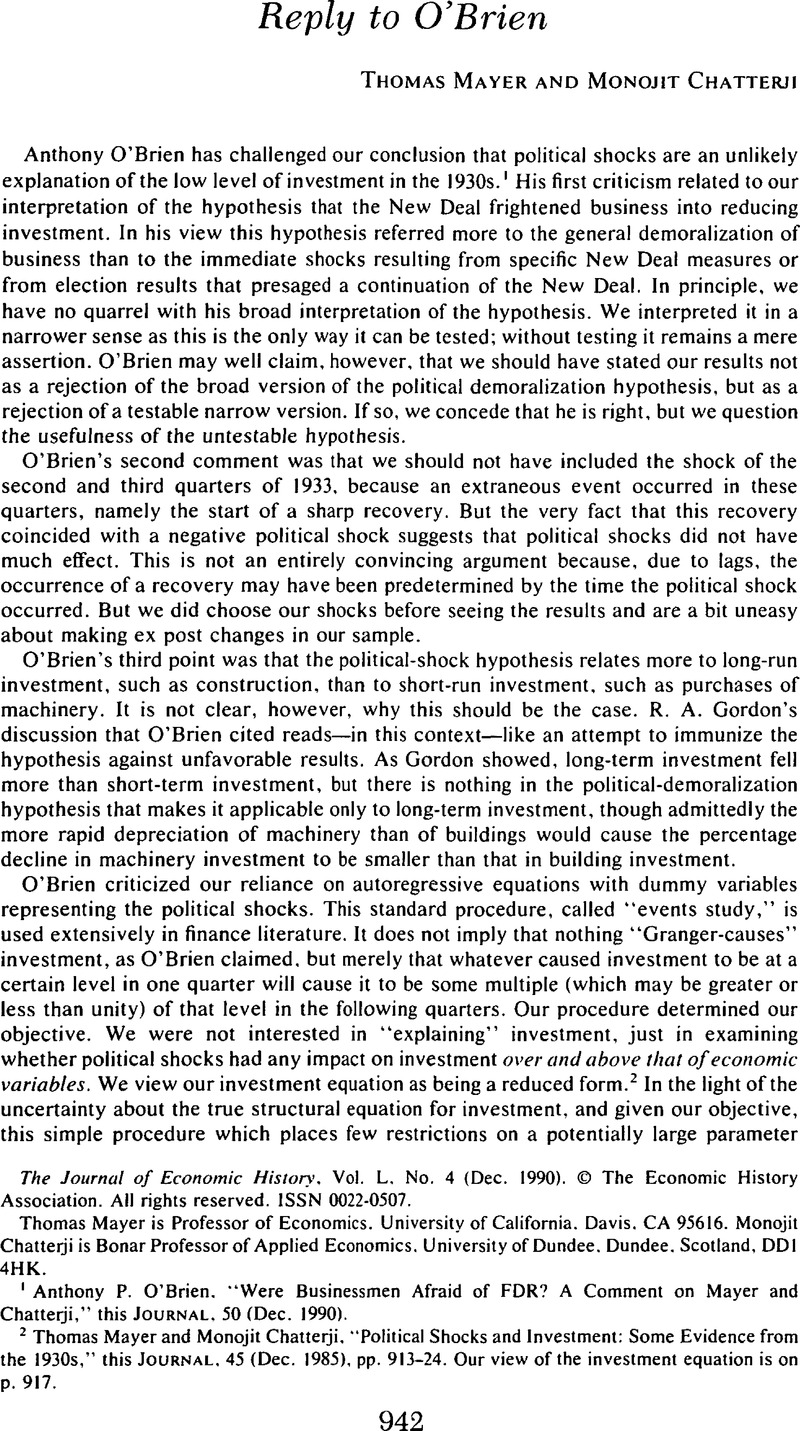Article contents
Reply to O'Brien
Published online by Cambridge University Press: 03 March 2009
Abstract

- Type
- Notes and Discussion
- Information
- Copyright
- Copyright © The Economic History Association 1990
References
1 O'Brien, Anthony P., “Were Businessmen Afraid of FDR? A Comment on Mayer and Chatterji,” this JOURNAL, 50 (12 1990).Google Scholar
2 Mayer, Thomas and Chatterji, Monojit, “Political Shocks and Investment: Some Evidence from the 1930s,” this JOURNAL, 45 (12 1985), pp. 913–24. Our view of the investment equation is on p. 917.Google Scholar
3 See Sims, Christopher A., “Macroeconomics and Reality,” Econometrica, 48 (01 1980), pp. 1–49.CrossRefGoogle Scholar
4 See Mayer, Thomas, “Economics as an Exact Science: Realistic Goal or Wishful Thinking,” Economic Inquiry, 18 (04 1980) pp. 165–78.CrossRefGoogle Scholar
5 We also take this opportunity to correct a transcription error. In table 1 of Mayer and Chatterji, “Political Shocks and Investment,” the entry for S5 for machine tools should be 0.32, not 3.19. Our discussion in the text is based on the correct figure.Google Scholar
6 We did, however, see if lagging the shocks by one quarter makes a difference. It does not.Google Scholar
- 1
- Cited by


